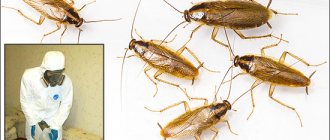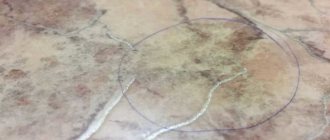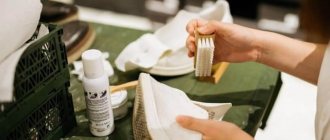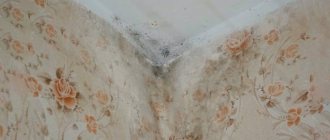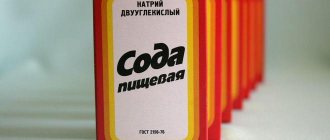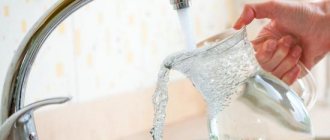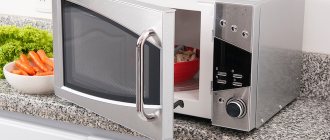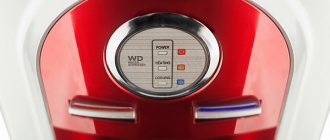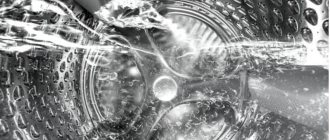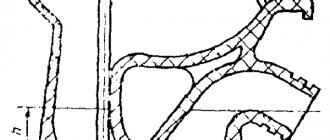Causes of yellow spots on liquid wallpaper and methods for eliminating them
With the help of liquid wallpaper you can easily transform the most boring interior.
Excellent aesthetic properties, durability and ease of application have made liquid wallpaper a popular wall decoration material. In addition, liquid wallpaper does not absorb moisture and is not susceptible to dust accumulation if treated with a special varnish. At the same time, the surface breathes and does not accumulate static electricity. You can even use a vacuum cleaner with a brush attachment to clean them. When treating the surface with varnish, you don’t have to worry about wet cleaning; otherwise, only dry cleaning is used.
But sometimes incidents happen and unattractive yellow spots appear on the newly repaired surface. This situation usually occurs due to incorrect application technology. To prevent this from happening, you must follow the instructions exactly.
If, despite the correct application, stains form on the liquid wallpaper, practical advice will tell you what to do.
Causes of stains on liquid wallpaper
Liquid wallpaper has gained great popularity in a short time. The plastic mass of cellulose, cotton fibers, glue and tinting is easy to apply on your own, with high performance characteristics. Various textures, additives, and the possibility of tinting open up wide horizons for decoration, creativity and the implementation of any design idea.
Complete drying takes up to 24 hours, after which spots of yellow color and varying sizes may appear over the entire area of the walls.
- The most common reason for their appearance is improper surface preparation.
After application to the walls, the liquid coating draws out all accumulated dirt. Therefore, the first priority is to completely clean the surface of the previous coating: paint, wallpaper, whitewash. No less carefully it is necessary to remove any foreign bodies - nails, screws, dowels. If it is impossible to remove them, paint over them with oil paint to prevent contact of the metal with the liquid plaster. After this, clean and walk over the entire surface of the walls with a double layer of deep penetration primer.
- If all the rough work was done correctly, but a yellow spot still appears on the liquid wallpaper, it means that the application technology was violated.
- Another option is incorrect tinting or uneven mass as a result of poor mixing. This is especially possible if tones from beige to brown are chosen.
- Walls may turn yellow due to low-quality finishing materials that have expired.
It is better to purchase products from well-known manufacturers and be sure to pay attention to the manufacturing date when purchasing.
Check how the wallpaper behaves in a small area and if everything is in order, then apply it to the entire surface
Is it possible to apply liquid wallpaper to drywall?
Plasterboard structures are ideal for applying this material. The only thing you need to do first is to prepare the surface correctly.
What is liquid wallpaper - a composition of dry cellulose, silk, cotton fiber or a mixture of these materials, diluted with water. There are many types of material and each of them has its own advantages. But all of them can be safely used in any room, even in children's rooms.
Silk wallpapers have the most aesthetic and practical appearance. The most wear-resistant and durable are cotton-based wallpapers, and cellulose wallpapers are considered the most environmentally friendly.
This material has many more advantages than disadvantages, and the most unpleasant one is the high cost of the material.
The main positive aspects can be considered:
- The material consumption is low; it is applied in a thin layer to a flat surface, and thus you can cover a large area with a small amount of wallpaper.
- The shelf life when unopened is almost unlimited.
- When applied, a smooth surface without seams is obtained.
- Good sound insulation and heat retention properties.
- Large range of colors.
Decorating walls with liquid wallpaper
Using this material, you can create any interior on the surface of plasterboard, while liquid wallpaper is an environmentally friendly material.
Why do wallpapers turn yellow?
Quite often, clients ask why the wallpaper turns yellow? The reason may be hidden in several points. Now we will consider all possible options or their overlap. You can also see the answers to the questions which wallpaper adhesive is best and why wallpaper peels off.
1. The walls must be carefully prepared. There should be no old wallpaper on the walls. There should be no pigment-releasing paints, such as drying oil. The walls must be smooth and clean.
2. The glue must be fresh and of high quality. Wallpaper paste is made from starch, usually reduced. Special additives are added to such adhesives that neutralize yellowness, mold, etc.
3. Wallpaper must be made of high-quality paper or non-woven fabric. Very thin paper wallpaper (simplex) can show through not only the color of the walls, but also the yellow wallpaper glue. If you choose paper wallpaper, then it is better to take duplex, they are two-layer, denser and do not show through.
4. Improper drying of wallpaper can also affect accelerated color pigmentation, but mainly in cheap wallpaper. How long it takes for wallpaper to dry has already been explained, so we won’t repeat it; you can read about this in the post How long does it take for wallpaper to dry.
5. Pay attention to the water you use to dilute the wallpaper glue. Very often, tap water is deceptive and when it dries, it not only gives a general yellowing of the wallpaper, but also noticeable dirty stains.
6. Wallpaper also turns yellow over time from detergents that contain chlorine. Do not use chlorine-containing detergents to wipe wallpaper.
Why do wallpapers turn yellow?
7. Pay attention to the “flowers of life”, otherwise you may still have to rack your brains about why the windows turn yellow)))
If you know other reasons why wallpaper turns yellow, write and share your knowledge.
Read daily new unique articles on various topics, news and abstracts on the Сhytayka website. Copying material from the site is permitted provided the source of the material is indicated and without modification.
UAZ Hunter is the most budget in its range
Cucumbers in winter: growing technology
Where to go in December
Classic loans and instant express loans are a good solution to various everyday issues
Growing avocados in an apartment.
Question 3. How to avoid yellow spots? And how to remove them if they have already appeared?
To prevent yellow spots from appearing, you need to prepare the wall well:
- Remove all old trim, being sure to pull out any nails if there are any. If necessary, coat the walls with an antiseptic primer.
- Putty and wait until the putty is completely dry.
- Prime the wall 2-3 times with a special “Waterstop” primer (from Silk Plaster) according to the alternating principle: 1 time – vertically, 2 times – horizontally. Each layer should be allowed to dry for at least 3 hours.
- And finally, we paint the wall with white water-dispersion paint in 2-3 layers, also alternating horizontal and vertical painting methods.
Tip: Silk plaster should be applied with a plastic, not an iron, spatula to avoid oxidation.
How to prevent yellow spots from appearing on liquid wallpaper
Decorative wallpaper requires careful preparation of the surface before application. It is necessary to remove the remains of old wallpaper from the walls and remove the old putty. Particular attention must be paid to the processing of protruding metal parts - nails, staples. These elements may rust when in contact with liquid wallpaper, resulting in yellow spots appearing on the surface. It is best to paint the metal parts with white enamel paint; a primer alone will not be enough.
Yellow spots may appear if the application technology is not followed or low-quality material is used.
Yellow spots are not always rust; pieces of old paper wallpaper, remnants of varnish, and putty can appear through layers of liquid wallpaper. This is why it is so important to prime the surface well. To remove yellow spots after applying decorative liquid wallpaper, you need to have a mixture of the desired shade in stock. Therefore, you cannot buy the material “back to back”; you should take a little more liquid wallpaper than required in terms of consumption.
Tools and accessories
All construction work must begin with the acquisition of tools and devices for their implementation.
- - a bucket, the volume of which must be at least 7-8 liters, for preparing the material;
- — a spatula for liquid wallpaper, which has a smooth surface and is made of plexiglass or stainless steel;
- - a trowel** made of plexiglass (or transparent plastic) or a gun for applying liquid wallpaper - a convenient alternative to a spatula;
- - a transparent grater with rounded edges - a tool for leveling liquid wallpaper;
- — paint roller and brushes for priming walls;
- - spatulas of different sizes for filling walls.
Yellow spots
Yellow spots on liquid wallpaper are a common occurrence when the surface dries out. Most often, this is due to the fact that metal oxide comes out of the walls due to metal fittings or other structures located in the wall reacting with water. When the wallpaper itself dries, it begins to draw moisture from the walls, as a result, where there are such problem areas, multi-colored (most often yellow) spots may appear.
When preparing walls for applying liquid wallpaper, it is advisable to first treat the surface twice with a covering primer, and only then apply liquid wallpaper.
If you still cannot avoid yellow spots, try to get rid of them by covering the problem area with acrylic material with low vapor permeability. This can be an overcoat acrylic primer and acrylic paint. Different surfaces and problems must be considered individually and appropriate solutions must be selected. Below we will describe simple ways to solve these shortcomings. In more complex cases, contact our company and our managers will help you understand the situation and will also try to offer solutions to these problems.
Colored wallpaper
- Prepare a stain remover solution by diluting it with water (1:1);
- Using a spray bottle, moisten the contaminated area with water;
- Treat the area with the stain remover solution in the same way.
White wallpaper
If the design of liquid wallpaper is monotonous white, there is no need to prepare a solution. Simply treat the area with stain remover without mixing it with water. You can also use white.
Removing yellow stains from wallpaper
The beauty of liquid wallpaper is that it can be restored at any time - during application, after drying. It will be possible to eliminate yellow spots on a decorative surface by re-applying the mixture to the desired area. To do this, first remove the layer with any defects that have appeared on it; it is best to remove the layer by first moistening the liquid wallpaper with plain water. Then the desired piece of wallpaper is removed with a spatula. This material cannot be reused.
To prevent stains from appearing on a wall previously painted with bright colors, in addition to the primer, before applying liquid wallpaper, you must also cover the surface with white paint.
To ensure that after restoration of the area with yellow spots on the liquid wallpaper that defects no longer appear, it is necessary to carefully treat the working surface. To do this, apply a primer in two or three layers to the wall or ceiling. Ideally, you should use a proven professional product. Next, you need to soak the dry mixture in the required amount and reapply the decorative liquid wallpaper, wait for it to dry. The primer can be applied either with a roller or with a brush, but the liquid wallpaper itself can be applied with a spatula.
Removing liquid wallpaper to remove stains includes the step of wetting the surface with yellowness. It is necessary to moisten the ceiling or wall generously - with a spray bottle, sponge or roller. The wallpaper should be left to soak deeply for half an hour or an hour. Wetting can be repeated to achieve optimal results.
